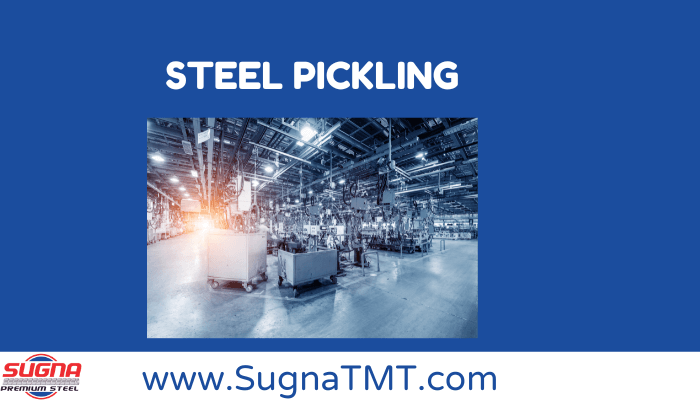Steel pickling is a crucial step in the manufacturing process that plays a significant role in enhancing the durability and quality of steel products. By removing surface impurities and creating a clean, uniform surface, pickling prepares steel for subsequent processing and improves its corrosion resistance. In this article, we’ll explore the importance of steel pickling, its benefits, and the methods used in this essential manufacturing process.
What is Steel Pickling?

Steel pickling is a chemical process used to remove surface oxides, rust, scale, and other impurities from the surface of steel. These impurities can accumulate during manufacturing, storage, or transportation, compromising the integrity and appearance of the steel. Pickling involves immersing the steel in an acidic solution, such as hydrochloric acid or sulfuric acid, to dissolve the surface contaminants and create a clean, oxide-free surface.
Benefits of Steel Pickling
Corrosion Resistance
One of the primary benefits of steel pickling is improved corrosion resistance. By removing surface oxides and impurities, pickling creates a clean surface that is less susceptible to rust and corrosion. This is especially important for steel products destined for outdoor or corrosive environments, such as construction materials, automotive components, and industrial machinery.
Surface Finish
Steel pickling also improves the surface finish of the steel, creating a smooth, uniform surface free from scale and imperfections. This enhances the aesthetics of the steel and facilitates subsequent processes such as coating, painting, and plating. Additionally, a clean surface ensures better adhesion of coatings and finishes, resulting in a more durable and attractive final product.
Dimensional Accuracy
Pickling removes surface irregularities and contaminants that can affect dimensional accuracy and tolerances. This is particularly critical in precision engineering applications where tight dimensional specifications are required. By achieving a clean, uniform surface, pickling helps ensure the consistency and precision of the final product, minimizing waste and rework.
Methods of Steel Pickling
Acid Pickling
Acid pickling is the most common method of steel pickling, involving immersing the steel in an acidic solution to dissolve surface impurities. Hydrochloric acid and sulfuric acid are commonly used for this purpose, although other acids such as phosphoric acid may also be employed. Acid pickling is effective in removing rust, scale, and oxides, but proper safety precautions must be observed due to the corrosive nature of the acids involved.
Mechanical Pickling
Mechanical pickling involves using abrasive methods such as shot blasting or sandblasting to remove surface contaminants from the steel. This method is particularly effective for removing heavy scale and rust from large or irregularly shaped steel components. Mechanical pickling can be combined with acid pickling for enhanced effectiveness, especially in cases where stubborn contaminants are present.
Conclusion
Steel pickling plays a vital role in enhancing the durability, quality, and appearance of steel products. By removing surface impurities and creating a clean, uniform surface, pickling improves corrosion resistance, surface finish, and dimensional accuracy. Whether through acid pickling or mechanical methods, the pickling process is an essential step in the manufacturing of high-quality steel products for various industries.

